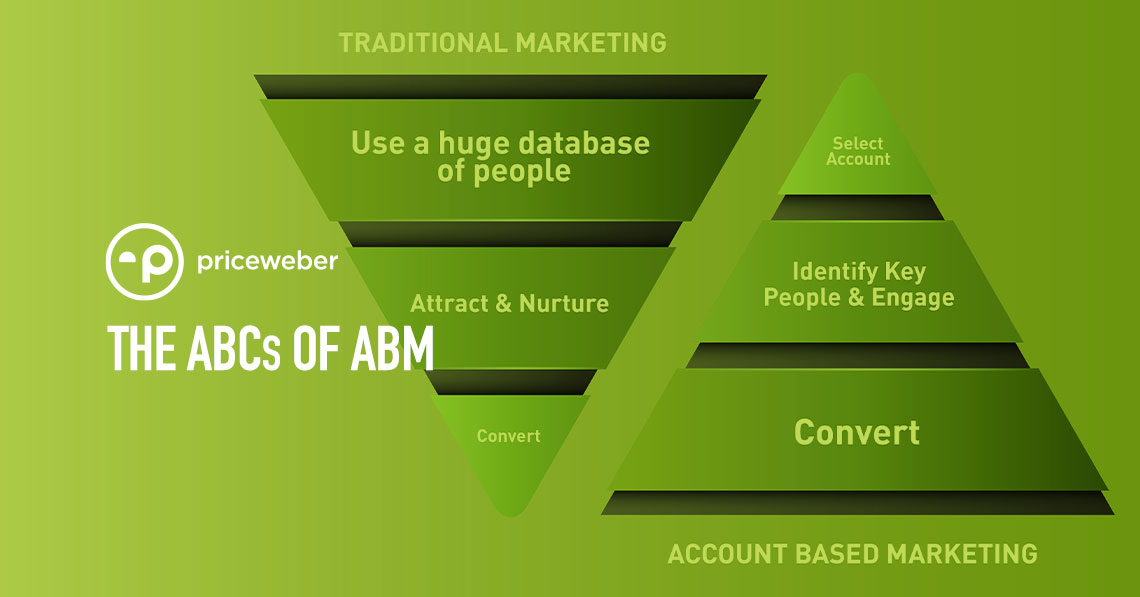If you are working at home with your children or your dog right now, you don’t need me to remind you that COVID-19 has changed the way we live and work. In the B2B industries, the changes have been tougher than just working from home. We’ve seen critical tradeshows, events and travel mostly cancelled. Reductions in budgets and staff have led to an increased reliance on account-based marketing (ABM). In fact, according to DemandBase, budgets dedicated to ABM increased by 40% in 2020. But it’s a new year, right? So, what do we see happening with ABM in the first half of 2021, and what does that mean for you and your business? In this edition of Plain Talk, we’ll rundown the new ABCs of ABM in 2021.
The Gorilla in the Room
First, let’s acknowledge that ABM is neither new nor is the increasing amount of attention marketers are giving to the practice. In fact, in December 2019, before anyone had heard of COVID-19, an ITSMA study indicated that 73% of marketers were already planning to increase their ABM spending. Why? Because B2B marketers have practiced some form of ABM since before it was called ABM. Direct mail, meetings, trade show lunches, etc. all work within the framework of modern ABM. What’s changed is the technology that supports serious scaling of ABM marketing and the plummeting cost of marketing automation. Marketers no longer have to commit to something like Salesforce to scale ABM. While Salesforce is a great product, let’s face it, it’s not cheap. In addition to automation technology, recent developments in ad tech, like IP targeting, have given scale and borderline creepy accuracy to ABM targeting. So with that said, let’s dig into ABM best practices for the year ahead.
A) Augment With Third-Party Intent Data
It should go without saying that predicting when a customer will buy during a pandemic is probably harder than normal. This is why intent data has never been more important. In this environment, the salesperson’s ability to know who is going to buy and when is greatly compromised. “The ability to identify which companies are most likely in the market for a solution today has made intent the fastest growing data category. Over the last two years, it has increased from 28% to 62% in use by companies surveyed by TOPO.” There are two types of third-party intent data that you can purchase. The first is unknown. Unknown data is collected by broadly analyzing and tracking internet activity from your targeted companies. Are they suddenly going to your competitors’ sites? Known third-party intent data is collected by forms mostly submitted to industry blogs. Knowledge is power and this is the knowledge your organization needs while you work from home.
B) More Digital Means Needing to Engage More Digital Channels
For at least the first half of 2021, the customer journey has become and will continue to remain almost entirely digital. Whether you’re selling million-dollar equipment or a $40 subscription, your customer’s journey has become significantly more digital. This means there is a greater onus on developing and propagating digital content. Since you know specifically who you want to target with ABM, LinkedIn, Facebook and demand-side platforms should be used to reach your targets in their basements.
Your customer is at home, online and fatigued; your customer’s experience with your site needs to be positive and memorable. Work to optimize their experience and augment your content. You should understand that:
1. Content should add value. Do more educating and less selling.
2. Video is nice. No one wants to feel like they’re in a library when they’re on your site.
3. Hosting seminars is a great way to better engage your customer. If they are designed and platformed well, they can be interactive, providing customer feedback. If you decide to host a seminar, remember one plus one can equal more than two. Partnering with vendors that sell non-competing products in your industry to provide insight on an industry issue, adds a lot of credibility.
C) Dive Deeper into ABM
Study after study shows that properly applied ABM principles consistently lead to shorter selling cycles and better return on investment (ROI). In the ITMSA October 2019 ABM Global Benchmark Study, when asked, “How does ABM’s ROI compare to traditional marketing initiatives?,” 71% of respondents reported better or significantly better. Additionally, from the same report, only 17% of respondents had reported having reached level four, “embedded” integration. It seems that while your sales force and marketing team aren’t traveling, now might be the best time to double-down on your integration efforts. Doubling down now will make your results stronger during the pandemic, but more importantly will yield long-term benefits. It’s safe to assume your competitors are working on their integration.
D) Circle Back to Existing Customers
ITMSA reports that ABM marketers cite pipeline growth as their most important metric. But ABM is also about better understanding the customer and developing with them a 1-to-1 relationship. This also entails that sales and customer service representatives are able to better understand how to service customers individually. Sales ultimately spearhead strong personal relationships with each decision maker. While salespeople have been handicapped from not being able to travel, they can work with marketing teams to better analyze the potential of each customer.
Are you getting everything you can from them? Now is not the time to leave money on the table. Leverage the established relationships to see if there are additional products or services they could buy from you. Content can be sent to remind customers you sell something that they haven’t bought yet, followed up by a call.
E) If You Market Both B2B and B2C Broaden ABM
Only 6% of ABM users are strictly focused on B2C customers. The determinate factor on whether to adopt ABM isn’t the customer but rather the product. Large ticket B2C items and services can benefit from an ABM approach as much as B2B products. Some examples are automobiles, planes and higher education. In each case, the potential customers can, with today’s technology, be identified, studied and closed.
F) Influence the Influencers
Influencer marketing is huge, but it’s often overlooked in B2B. According to Gartner, only 17% of a customer’s time in their B2B buying process is spent meeting with potential vendors. Because of the 1-to-1 relationship, it is very possible to identify your buyer’s internal and external influencers like bloggers, trade press, chief financial officers, underlings, engineers, etc. Each influencer can be integrated into the ABM sales strategy. Surprisingly only 29% of ABM marketers report offering influencer content as part of their ABM initiatives, so there is definitely opportunity for a competitive advantage with influencers.
We don’t know when the pandemic will end. A month? Six months? What is certain, however, is that while the world will in many ways change back to normal, there will be lasting effects from this disruption on how we live and do business. While we hope tradeshows come back strong to bring back more opportunities for in-person contact, the integration of strong digital ABM strategies into the marketing mix is permanent. Marketers and sales forces who embrace and integrate these practices, will find that they get considerably more efficiency from their prospecting and ultimately close more deals.
If you’d like to learn more about contemporary ABM practices and how to up your digital ABM game, please give us a call at 502-499-4209 or drop us a note here, and we’ll get right back to you.


